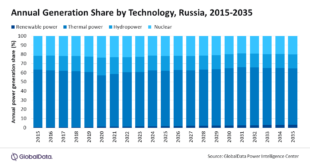From recreational robots such as drones, to critical operational robots in the medical field, robotic technology is changing our daily lives. Stewart Goulding explores some current trends that are set to appear in 2020
Robots are everywhere – from robotic wearables, hands, and arms, to companion robots, medical devices, and even biomorphic drones that model the behaviour of bees.
Cobots in the workplace
Since arriving on the scene in the mid-2010s cobots, or collaborative robots, have taken the market by storm.
Cobots offer a variety of opportunities for production lines, particularly to enable humans and robots to complement each other, all while working alongside one another safely.
The new trend for these styles of robots is making them more accessible, with more cost-effective options now allowing for greater distribution and use.
In fact, cobots can reduce the human input on production by up to 50%. With the current skills gap having cost UK organisations FAULHABER brushless DC-motors, which help to achieve the required precision and consistency.
With a complimentary gearhead fitted these motors have a broad selection of reduction ratios available ranging from approximately 3:1 to 1500:1, which gives extensive adjustment of the speed and torque of the device.
In the ViKY systems up to 700mNm of precise movement was achieved using FAULHABER dirve systems.
These types of developments are crucial in ensuring medical facilities can cope with the rising number of surgeries, all while reducing fatigue, preserving surgeon wellbeing and avoiding burn out.
Robotics in agriculture
A recent market research study reports that the demand for agricultural robots will see an increase of 24.1% by 2024. It is no wonder that more agricultural robotic applications are emerging, including biomorphic drones that model the behaviour of bees, which were demonstrated at UK-RAS.
Robots and drones could have a big effect on the effectiveness of farming. From drones that monitor and analyse crops, to automated tractors that can seed, fertilise and harvest, agricultural robot developments all mean that human labour can often now be devoted to more complex tasks.
In fact, some rural farms in China are starting to use heavy-duty industrial drones to water crops in hard to reach areas. The method is proving to be more fuel-efficient than transporting workers and the computer-controlled sprayers waste fewer resources.
So, whether it’s across production lines, in surgical theatres or across vast agricultural fields, robotic applications are helping to provide innovative and reliable methods of working for all involved.
Who knows what the future will hold in 2020 and beyond, but for now, advanced robots are here to stay.
Stewart Goulding is managing director at precision drive system supplier Electro Mechanical Systems Ltd.
 Engineer News Network The ultimate online news and information resource for today’s engineer
Engineer News Network The ultimate online news and information resource for today’s engineer



